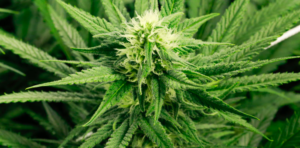Legalising marijuana for either recreational or medical use makes lawmakers very popular
Canada is about to legalise marijuana.
Really? Does he need any more help?
When it comes to the facts about whether the use of cannabis for chronic pain is effective and worth some of the troublesome accompaniments that go with it, the lines can get a bit blurred. Here in Oregon, where I am currently based, marijuana was legalized for recreational use just over a year ago but has been legal for medical purposes for more than 10 years. A report in the local paper – The Oregonian, suggests that one year on, the tax generated from the sale of pot accounted for just under $15 million, from sales of around $60 million, an impressive boost to the public purse for this relatively low population state. However they also recognized that there had been a significant increase in people driving under the influence of marijuana, as well as calls to the poisons centre and visits to the emergency room for people who have over indulged. The other obvious fears around such a move to decriminalize the drug – increases in psychological illness in adults who have been exposed to the drug in adolescence, and the possibility of abuse or addiction, are yet to be examined due to the longitudinal nature of the studies needed to provide this data. In Colorado, where marijuana was legalized in 2012, it was noticed that calls to the poisons centre went up by around 30% and that people self-reporting to treatment centers increased by around 66%.
From the social side of the things, what I have found interesting living here is the reduction in stigma around the drug – the notion of which came wafting in my direction at a school fundraiser and social event that I recently attended. Its just not a big deal.
For many countries or states trying to decide whether or not to introduce the drug for medical purposes, it is hard to sort out the emotion from the science. The emotive arguments can sometimes come across as if a lifesaving drug is being deliberately withheld. There are certainly clinicians who report amazing and life changing results from observing patients using the drug for treating multiple sclerosis and nausea associated with chemotherapy. However, like any drug used to treat a condition, we first of all need to know if it works, how well it works, and if the side effects or other issues associated with the drug outweighed by the benefits .
For treating chronic pain with medical marijuana, it seems like the answers are not straight forward. The stigma and illegality of the drug certainly makes studying it trickier than it otherwise might be. There is some evidence starting to trickle through – solid clinical trials showing good levels of efficacy. However they are confounded by many problems – high drop out rates, difficulty in the standardization of the components or chemical make up of the product and side effects, for example the inability to drive.
Two recent papers on the topic shed some light onto the effectiveness of the drug’s use in the treatment of chronic pain. This study from 2015 combines data from both synthetic cannabis as well as herbal cannabis (1). The synthetic cannabis drugs that have been included in the review are dronabinol, Nabiximol and levonantradol, which are prescribed in some countries for the treatment of nausea associated with chemotherapy, wasting syndrome associated with AIDS, spasticity with MS and chronic neuropathic pain. Overall this review suggests that there was moderate-quality evidence to suggest that cannabinoids (either herbal or synthetic) were effective at reducing pain in chronic pain states and treating spasticy, however the data for reducing nausea and improving appetite to prevent wasting in HIV whilst promising, was of a lower quality. The review combined data from both cannabis that was smoked or eaten in a preparation with data from clinical trials on the synthetic cannabis, which it should be noted, have generally poor efficacy when reading their individual outcome studies.
Herbal cannabis has up to 573 constituents (2). THC is the main psychoactive component which tends to cause the euphoria or relaxation effects as well as potentially contribute to anxiety and paranoia which can sometimes be experienced. Other compounds that have an effect on the physiology are metabolites of the breakdown of the primary components. The other notable component is cannabidiol (CBD), which does not cause psychotropic effects on its own and is suggested to work to attenuate the anxiolytic effects of the THC (3). It should be noted that most of the synthetic forms of cannabis are purely THC based. These include dronabinol and nabilone which have been trailed and used in the treatment of nausea associated with chemotherapy and spasticity associated with MS. The small effect sizes that they have on these conditions doesn’t warrant much excitement (1). Nabiximol, a synthetic mix of both THC and CBD analogues, is available for prescription in Canada and parts of Europe for treating pain, nausea and spacticity. Again, the results are not that exciting and the side effects play into the decision for other countries not to license the drug.
A 2016 discussion paper suggests that the use of herbal cannabis (smoked, eaten or oil based) in chronic pain settings (both nociceptive and neuropathic) resulted in VAS score reductions of 50% and 33% with numbers needed to treat (NNT) of 2 and 3.5 respectively. These results were far superior to placebo and similar to reductions seen with the use of strong opioids (4). A difficult condition to treat, drugs used to treat neuropathic pain, opioids and gabapentin, have reported NNTs of 4.3 and 7.2 respectively (5), well below the efficacy demonstrated in the above medical cannabis trials. Another 2016 study also suggested that in states of the USA where medical marijuana has been legal for some time, there appears to be an associated statewide decrease in opioid use and thus a reduction in opioid associated deaths (4). These are probably statistics that should make us sit up and take notice. Opioid related deaths have increased dramatically in the last 10 years, alongside the increased prescription rates of opioids. Additionally, opioids account for 75% of all overdose deaths in the USA (6). It is easy to see why some people are excited by the possibilities that cannabis seems to present.
Some clinicians are not convinced that the gains to be made are worth the hassle to overcome the problems associated with medical use of marijuana. Dr Michael Vagg, a medical practitioner working in the field of pain in Geelong, Australia, wrote in his article in “The Conversation, AU” that the lack of research and heterogeneity of products leaves significant gaps in the decision to pursue the implementation of medical marijuana. He argues that the current state of evidence for the drug is not compelling enough to overcome the safety and quality and regulation issues.
So is the juice worth the squeeze? Are we just swapping one set of side effects with another? Is it the missing piece in the chronic pain puzzle that we have been waiting for? The jury is still probably out and until we have a bigger evidence base to draw from we may not know. It is certain that there are patients who will benefit from using this drug, but it is not without problems – do we swap opioid related deaths for DUI traffic deaths? Many questions to be answered…… much pondering to be done……. On that note, I might pop out and make the most of the greenery that Oregon has to offer.
I’m going for a walk in the forest, not to smoke a cheeky one! 😉
If you are interested in learning more about the studies of cannabis and chronic pain, as well as other pharmacological approaches to chronic pain, there is a 1 hour lecture available to purchase on our online teaching site here.
1. Whiting PF, Wolff RF, Deshpande S, Di Nisio M, Duffy S, Hernandez AV, et al. Cannabinoids for Medical Use: A Systematic Review and Meta-analysis. JAMA 2015;313:2456-73.
2. Savage SR, Romero-Sandoval A, Schatman M, Wallace M, Fanciullo G, McCarberg B, Ware M. Cannabis in Pain Treatment: Clinical and Research Considerations. J Pain 2016;17:654-68.
3. Ahrens J, Demir R, Leuwer M, de la Roche J, Krampfl K, Foadi N, et al. The nonpsychotropic cannabinoid cannabidiol modulates and directly activates alpha-1 and alpha-1-Beta glycine receptor function. Pharmacology 2009;83:217-22.
4. Boehnke KF, Litinas E, Clauw DJ. Medical Cannabis Use Is Associated With Decreased Opiate Medication Use in a Retrospective Cross-Sectional Survey of Patients With Chronic Pain. J Pain 2016;17:739-44.
5. Finnerup NB, Attal N, Haroutounian S, McNicol E, Baron R, Dworkin RH, et al. Pharmacotherapy for neuropathic pain in adults: a systematic review and meta-analysis. Lancet Neurol 2015;14:162-73.
6. Sehgal N, Colson J, Smith HS. Chronic pain treatment with opioid analgesics: benefits versus harms of long-term therapy. Expert Rev Neurother 2013;13:1201-20.




